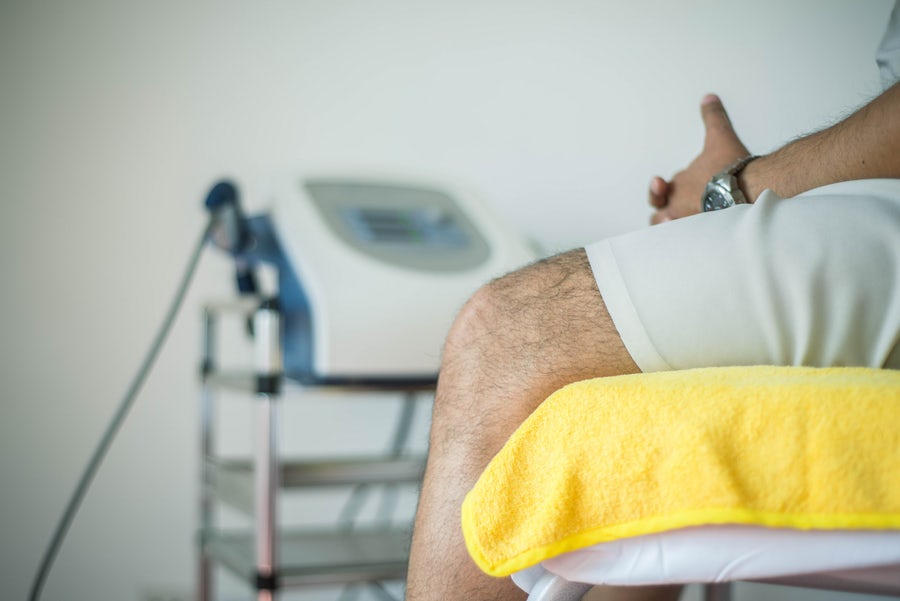Gonarthrosis is the slowly progressive wear and tear of the joint with loss of cartilage and possibly accompanying misalignment of the knee joint. Along with coxarthrosis (arthrosis of the hip joint), gonarthrosis is one of the most common arthroses in the human body and affects almost every second Austrian from the age of 60.
In addition to increased age, the causes include misalignments and damage after accidents, inflammatory changes, hard work and obesity. At the beginning, patients usually suffer from increasing pain with increased stress. In the more severe stages also from pain at rest and at night. The mobility of the knee joint gradually decreases. The walking distance is usually reduced to a few hundred meters in the end. Start-up pain after long periods of rest and morning stiffness are also repeatedly described. The knee joint is prone to recurring effusions, swelling and partial overheating. In the knee joint, there is a progressive destruction of the articular cartilage and thus a narrowing of the interior of the joint. If there is complete loss of cartilage, the thigh bone will eventually come into constant contact and friction with the lower leg bone. In severe cases, deep defects in the bone can lead to misalignment of the joint with leg axis deviations and the formation of massive O or X legs.
Therapy
Initially, gonarthrosis can be treated well with infiltrations of anesthetists and corticosteroids into the joint, physiotherapy, insoles and possibly by using knee joint orthoses. In addition, the infiltration of hyaluronic acid into the joint and ACP therapy are successfully used. If all conservative therapy attempts do not show sufficient success, surgical repair using knee joint replacement (K-TEP) is indicated. Depending on the joint area affected, half-slide prostheses, surface prostheses or, in severe cases, axle-guided prostheses are used.
Primary artificial joint replacement (TEP)
Along with the implantation of an artificial total hip endoprosthesis, the artificial total knee endoprosthesis is the most frequently performed operation in orthopedics.The most common reason for the implantation of a K-TEP is conservatively treated arthrosis of the knee joint, which is accompanied by wear and tear and consequently the complete loss of the articular cartilage.In addition to the constant loss of mobility, this leads to a massive increase in pain and a reduction in walking distance.
With the help of a knee prosthesis, the damaged joint partners can be completely replaced with special surface implants, giving the patient back their quality of life.A knee prosthesis essentially consists of 3 parts: an implant on the thigh bone (femoral component), an implant on the lower leg bone (tibial component) and a polyethylene insert, which is inserted between the metal implants as a sliding bearing.
If there is massive damage to the back surface of the kneecap, it is also treated with a back surface replacement made of polyethylene in the same surgical session. Depending on the degree of osteoarthritis and the advanced stage of destruction of the knee joint, in rare cases it may be necessary to use special axis-guided implants with long shafts. As a specialist in knee joint diseases, the implantation of a knee prosthesis is one of my surgical focuses!
Post-treatment
After the operation, walking with the new joint is learned again on the first postoperative day with the help of intensive physiotherapeutic care. In addition, movement progress is documented daily and gradually improved with the help of a special motor rail. Depending on the progress of the wound healing and physical well-being, the patient will be discharged from the inpatient environment to home care after about 4-6 days, provided the gait is safe. Post-operatively, in addition to physical therapy and regular training with the motor splint, the healing progress should be checked regularly in my office.</p>
I also advise my patients to undergo rehabilitation in a specialized rehabilitation facility approx. 6-8 weeks after successful implantation of the new knee joint. Afterwards, a check-up with a current X-ray of the operated knee joint is scheduled once a year in my office.

OA Dr. Kathrin Sekyra, MScFA for orthopedics and orthopedic surgery, FA for trauma surgery


